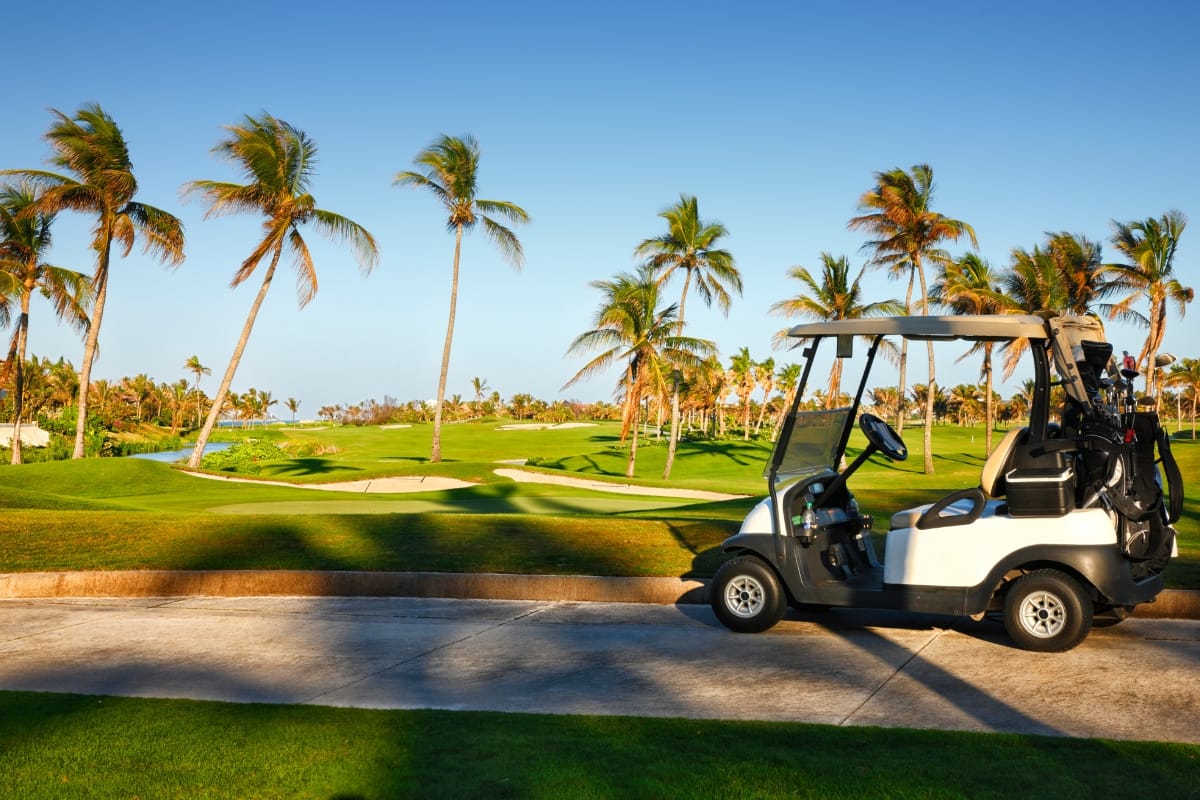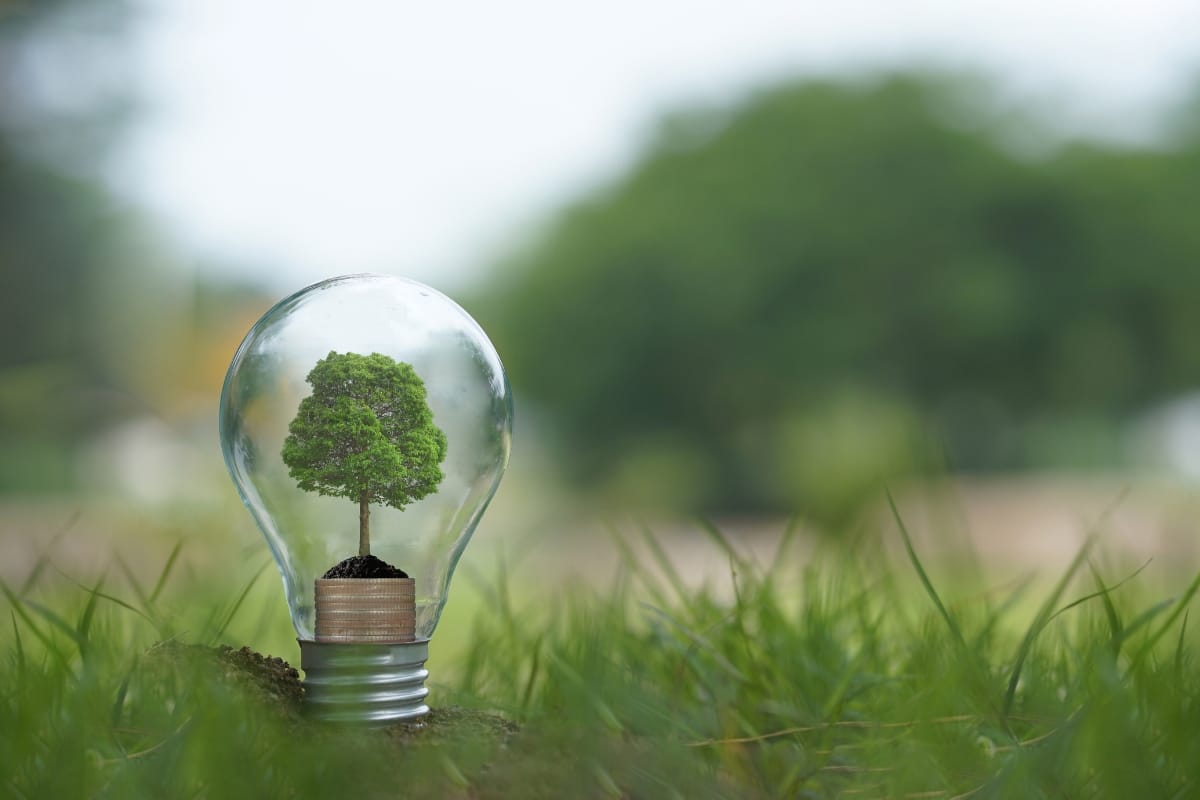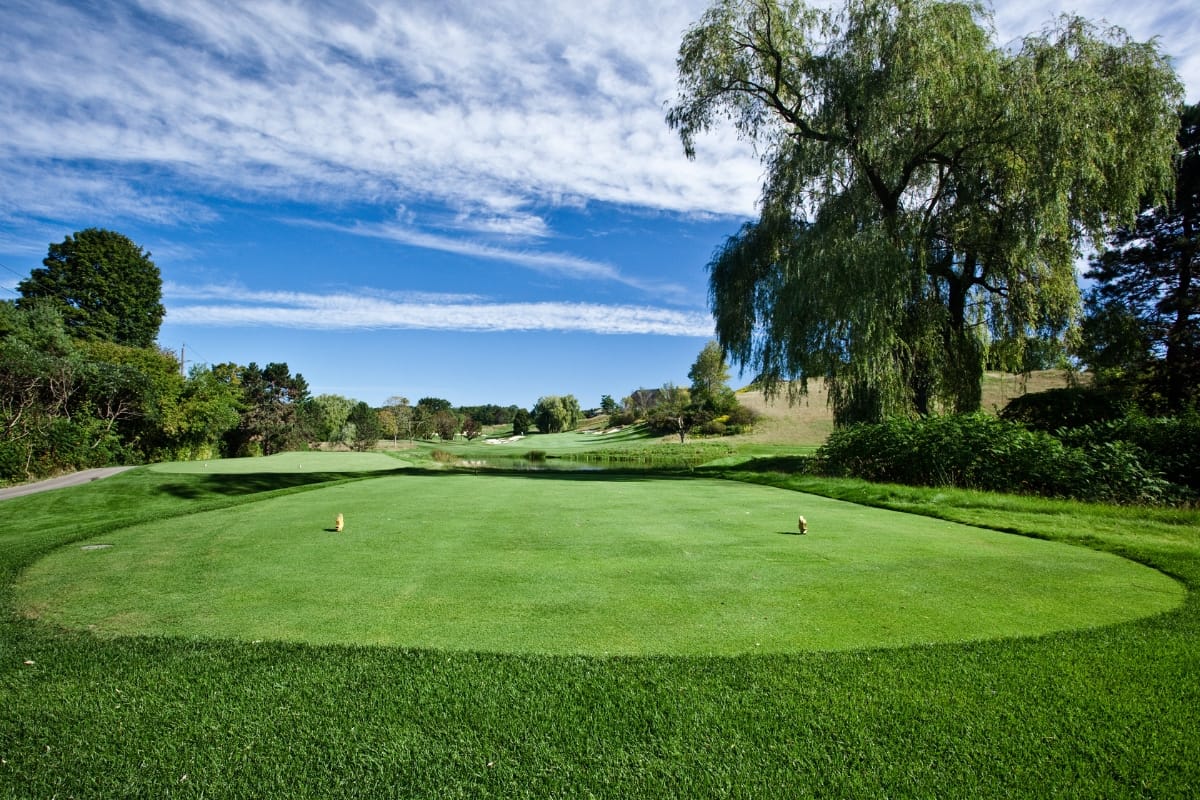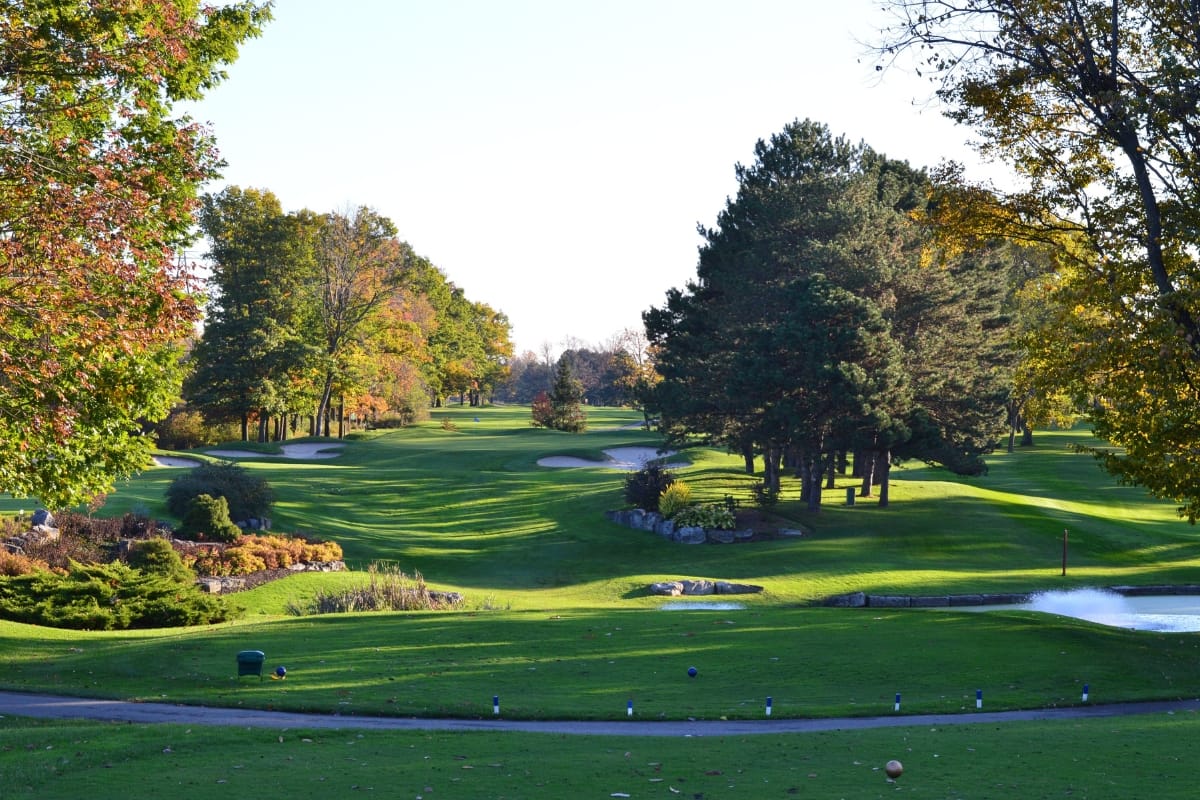Sustainable golf courses are at the forefront of revolutionizing the future of the sport, blending the love for the game with a commitment to environmental responsibility.
By embracing eco-friendly practices, such as water conservation, natural landscaping, and the use of renewable energy, these courses are reducing their ecological footprint while maintaining pristine greens. In this guide, we’ll explore how sustainable golf courses are shaping the future of golf, offering players an exceptional experience while preserving natural resources.
Whether you’re a golf enthusiast or an environmental advocate, discover how these innovative environmentally friendly golf courses are redefining the game and leading the way toward a greener, more sustainable future for golf.
Swing into Sustainability: The Transformation of Golf Courses
The Evolution of Golf Courses: From Traditional to Sustainable Designs

Golf courses have come a long way since their inception. Traditionally, golf courses were designed with little regard for the environment. They often required large amounts of water, chemical fertilizers, and pesticides to maintain their pristine appearance.
However, as the world became more aware of the need for sustainability practices, golf course designers started incorporating eco-friendly elements into their designs.
Today, sustainable golf courses are revolutionizing the way we think about golf course design. These courses are designed with the environment in mind, using techniques that minimize water usage and reduce chemical inputs. They also prioritize biodiversity by incorporating native plants and creating habitats for local wildlife.
One example of a sustainable design practice is the use of natural drainage systems. Instead of relying on artificial drainage systems that require excessive water usage, sustainable golf courses utilize natural features such as swales and wetlands to manage stormwater runoff. This not only reduces water consumption but also helps filter pollutants before they enter nearby bodies of water.
Another aspect of golf sustainability design is the use of recycled materials. Many sustainable courses incorporate recycled materials into their construction, such as reclaimed wood for bridges and recycled plastic for tee markers.
By repurposing materials that would otherwise end up in landfills, these courses reduce their environmental impact while still providing a high-quality playing experience.
Incorporating Renewable Energy Sources: Powering the Future of Golf

Incorporating renewable energy sources into golf course operations is a forward-thinking approach to help create a sustainable golf course, significantly reducing both environmental impact and long-term operational costs.
Solar panels, for instance, are becoming a staple on the roofs of clubhouses, maintenance facilities, and even golf cart storage areas. These panels can generate a substantial amount of electricity, offsetting energy costs and helping courses operate more sustainably.
Going beyond solar energy, some courses are exploring the use of wind and geothermal energy. Wind turbines, when strategically placed on the course, can harness wind power to produce clean electricity, further reducing the reliance on non-renewable sources.
Geothermal systems are another innovative solution, using the Earth’s natural heat to regulate temperatures in buildings, providing an energy-efficient method for heating and cooling.
By embracing these technologies, golf courses not only cut down their carbon emissions but also position themselves as leaders in environmental stewardship.
The long-term financial benefits of renewable energy—such as reduced utility bills—help justify the initial costs of installation, making it a smart investment for the future. These efforts also align with the growing demand from environmentally conscious players who seek sustainable practices in the sports and recreation industry.
Water Conservation Strategies: Preserving Every Drop on the Green

Water conservation is a key focus in sustainable golf course management, as traditional courses are notorious for their high water consumption. By adopting innovative strategies, golf courses can significantly reduce their water usage while maintaining high-quality playing conditions.
One effective strategy is the integration of drought-tolerant grass species, which naturally require less water than conventional varieties. These grasses are specifically chosen for their ability to thrive in drier climates, reducing the need for frequent watering.
Additionally, sustainable courses often employ smart irrigation systems. These advanced systems use sensors to monitor real-time soil moisture levels, adjusting watering schedules to provide only the necessary amount of water, which prevents over-watering and waste.
Recycling water is another crucial approach. Some courses have implemented on-site wastewater treatment systems that allow them to use treated greywater or reclaimed water for irrigation, easing the strain on local freshwater sources.
These sustainable golf practices and water-saving strategies not only contribute to environmental preservation but also result in significant cost savings, making them a win-win solution for golf courses committed to sustainability.
Native Plant Landscaping: Enhancing Biodiversity and Reducing Maintenance Costs

Native plant landscaping is a powerful tool in the creation of sustainable golf courses, offering both environmental and economic benefits. By incorporating plant species native to the region, golf courses can drastically reduce their reliance on water, fertilizers, and pesticides, as these plants are naturally suited to local soil and climate conditions.
This not only cuts maintenance costs but also enhances the resilience of the landscape, making it more adaptable to changing weather patterns and reducing the environmental footprint of the course.
Moreover, native plants play a crucial role in boosting local biodiversity. By fostering habitats that attract and support native wildlife, including birds, pollinators, and beneficial insects, golf courses contribute to the health of the surrounding ecosystem.
This focus on biodiversity not only enriches the aesthetic value of the course, offering golfers a more natural and immersive experience, but it also plays a part in preserving local flora and fauna, promoting ecological balance.
Organic Pest Management: Keeping Greens Pristine Without Harmful Chemicals

Organic pest management on sustainable golf courses represents a proactive, eco-friendly approach to maintaining the delicate balance between pristine greens and environmental responsibility.
Unlike traditional courses that rely heavily on chemical pesticides, organic methods focus on natural, biological controls. For example, introducing beneficial insects like ladybugs, lacewings, or nematodes helps manage pest populations without harming the ecosystem. These natural predators keep pest species in check, reducing the need for chemical interventions.
Additionally, sustainable courses adopt Integrated Pest Management (IPM) strategies, which prioritize pest monitoring, early detection, and targeted treatments only when pest levels exceed a predetermined threshold. This reduces unnecessary applications of treatments and focuses on addressing specific issues without widespread chemical use.
The benefits extend beyond environmental health. By reducing the reliance on toxic chemicals, golf courses promote safer conditions for both players and maintenance staff while minimizing the risk of groundwater contamination.
Moreover, organic pest management helps preserve beneficial insect populations and supports overall ecosystem health, contributing to a balanced and sustainable golf environment.
Community Engagement: Educating and Involving Local Residents in Sustainable Practices

Community engagement is crucial for fostering a sense of environmental stewardship, and sustainable golf courses are taking proactive steps to involve local residents in their green initiatives.
These courses offer educational workshops, covering topics such as sustainable landscaping, water conservation, and wildlife protection. By teaching local residents how these practices can be implemented in their own homes and neighborhoods, golf courses help spread environmental awareness beyond their greens.
In addition to education, many sustainable courses encourage hands-on involvement through volunteer programs. These opportunities allow residents to participate in eco-friendly maintenance tasks, like planting native vegetation or assisting with organic pest management. Such engagement not only strengthens community bonds but also gives locals a personal stake in the course’s sustainability efforts.
Partnerships with schools and local organizations can also be an integral part of this engagement. By integrating environmental education into school curriculums or hosting conservation events, courses can inspire the next generation of environmental advocates.
This collaboration between the golf course and the community ultimately creates a ripple effect, leading to broader sustainability impacts across the region.
Economic Benefits of Sustainability: How Going Green Can Save Green

Sustainable golf courses offer a powerful combination of environmental stewardship and economic benefits. By adopting eco-friendly practices, courses can dramatically reduce their operating costs, making sustainability a smart financial investment in the long term.
One key area where savings can be achieved is energy consumption. By incorporating renewable energy sources like solar panels, wind turbines, or geothermal systems, golf courses can decrease their dependence on traditional power sources, thus lowering their energy bills. Additionally, using energy-efficient lighting and smart HVAC systems can further cut down on electricity costs.
On top of the operational savings, sustainable golf courses can attract a growing demographic of environmentally conscious golfers, which can increase revenue through memberships and event bookings. Marketing a course’s commitment to sustainability can enhance its public image, creating a unique selling point that resonates with eco-conscious consumers. By going green, golf courses not only help the planet but also boost their bottom line.
Reshaping the Landscape: Designing Golf Courses with Sustainability in Mind

Sustainable golf course design takes a comprehensive approach that focuses on integrating the course into the natural environment rather than imposing on it. Designers prioritize the preservation of the existing landscape, using the topography and natural features to shape the course layout.
This minimizes the need for extensive land alteration and reduces environmental impacts. For instance, instead of leveling large areas, they work with the natural contours of the land, reducing soil erosion and runoff.
Sustainable courses also emphasize the use of native plant species, which require less water and fewer chemical treatments than non-native grasses. This not only enhances the biodiversity of the area but also reduces maintenance costs.
Water features, such as ponds and wetlands, are designed to function as part of the ecosystem, supporting local wildlife and managing stormwater naturally. Additionally, sustainable design includes energy-efficient clubhouses and maintenance practices, further reducing the course’s carbon footprint.
By reshaping the landscape with sustainability in mind, these golf courses achieve a symbiotic relationship between recreational use and environmental preservation. They enhance the player’s experience while protecting the natural surroundings for future generations.
Conclusion: Shaping a Greener Future for Golf and the Environment
Sustainable golf courses are paving the way for a greener future in the sport, revolutionizing how we approach both the game and the environment. As you embrace eco-friendly practices on the course, make sure your apparel aligns with these values.
The evolution of golf courses from traditional designs to sustainable models is not just about reducing their environmental impact; it’s about redefining what it means to be a golfer in harmony with nature.
Golf Shot Apparel offers high-quality, sustainable golf wear that lets you play in comfort and style. Contact us at 888-950-9515 or check out our shop to explore our collection and make an eco-conscious choice for your next game.











